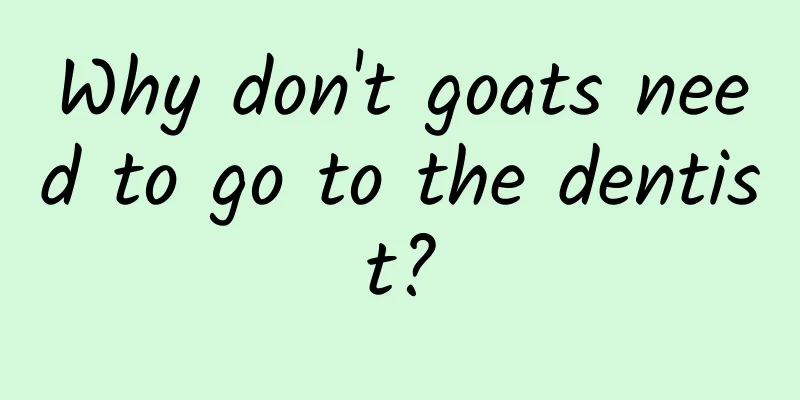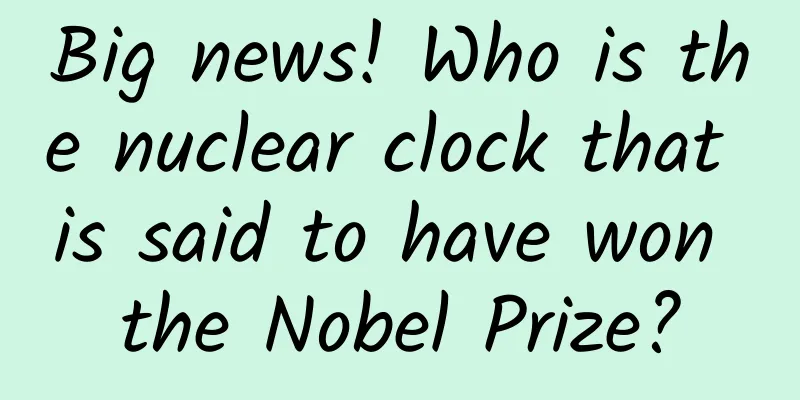"I grind my teeth in my dreams!" Where does bruxism come from?

|
(Photo courtesy of TUCHONG Creative) Where is the "crunching" sound coming from in the quiet night? Why do my cheek masseter muscles ache and I can't open my mouth when I wake up in the morning? Why do I always feel tired and sleepy during the bright day? This may be caused by bruxism! According to a survey, the proportion of people suffering from nocturnal bruxism can reach about 20%, which means that about one in five people suffers from this disease. In every dormitory in the university, there may be someone who grinds their teeth at night! Nocturnal bruxism can be divided into two types according to the severity of the symptoms. Non-destructive nocturnal bruxism only occurs when the teeth are clenched, causing little or no damage to the teeth, jaw muscles, and joints, while destructive nocturnal bruxism is not only harmful because it produces noise and affects other people's rest. Destructive nocturnal bruxism not only causes tooth wear and loosening, the loss of expensive tooth restoration materials, masseter muscle pain and hypertrophy, temporomandibular joint disorder, etc., but is also accompanied by whole body limb movements during sleep, which is closely related to night awakenings and daytime sleepiness. People have long known about bruxism. The earliest record of bruxism in my country was in the "Golden Chamber Synopsis·Jingshishuangbingmaizhengzhi". There is also a description of Qingwen grinding her teeth at night in the Dream of the Red Chamber. As early as the 1840s, there were papers analyzing bruxism. At first, people used to judge whether there was bruxism based on whether the teeth were worn. However, people who do not grind their teeth may also cause tooth wear due to different oral hygiene habits, different diet types, or diseases such as gastric acid reflux. The diagnosis of bruxism mainly depends on the patient and others' description of their symptoms of grinding their teeth at night. In 1961, Ramfjord proposed that bruxism was mainly caused by malocclusion. Subsequently, studies have shown that orthodontic treatment can reduce the occurrence of bruxism. However, further research by others found that Ramfjord's research method was flawed. Other research results showed that orthodontic treatment was not significantly correlated with the improvement of bruxism, and that the proportion of people suffering from bruxism was similar in the two groups of people with and without occlusal problems. This shows that occlusal problems are not the only or main cause. In addition, at the time, people believed that bruxism was a sleep-related movement disorder and that it had no effect on the patient's sleep. With the continuous innovation of detection methods, EEG analysis of brain state has become more accurate and effective, and this technology has also been applied to the study of nocturnal bruxism. But first, let's take a brief look at sleep. Sleep is divided into non-rapid eye movement (NREM) and rapid eye movement (REM). NREM is divided into falling asleep, light sleep, and deep sleep. In each sleep cycle, people will experience the falling asleep, light sleep, deep sleep, light sleep, deep sleep, and REM in NREM in turn. The REM in each cycle is longer than the previous cycle, and the deep sleep period is shorter than the previous cycle. Experimental studies have found that nocturnal bruxism mainly occurs during the light sleep phase of NREM , and about 10% occurs during REM. During the light sleep phase, there is a stage called the micro-arousal phase of sleep, when the heart rate rises, muscle tension increases, and brain activity increases. During REM, there are also changes in metabolism, heart rate, and brain activity, and at this time, the anti-gravity muscle tension and spinal H reflex decrease, which may lead to a decrease in proprioception and mandibular opening reflex that prevents damage from chewing. Considering that nocturnal bruxism is often accompanied by symptoms such as limb movements and poor sleep quality, the secret of nocturnal bruxism is likely hidden in the central nervous system. In experiments using central nervous system chemical-related drugs on patients with bruxism, it was found that levodopa and clonidine had a therapeutic effect on bruxism. In addition, catecholamines in the urine of patients with bruxism were also elevated. As more drug experiments were conducted, studies found that taking 1 mg of clonazepam, a class of benzodiazepine drugs that enhances GABA's inhibition of nerve excitability by binding to GABA receptors, can reduce the incidence of bruxism by 40%, while the use of 5-HT reuptake inhibitors such as fluoxetine can aggravate bruxism. These experiments show that dopaminergic, serotonergic, and adrenergic systems are involved in the occurrence of bruxism . Based on this, central chemicals are believed to be highly related to bruxism . The latest hypothesis also takes into account the factor of increased heart rate and believes that bruxism is the result of the influence of the central and autonomic nervous systems on oral and mandibular activities during sleep. Many studies have also suggested other possible factors , such as stress and psychological conditions, but according to relevant studies, this association only applies to a subtype of bruxism, who are more anxious, aggressive, and overactive. For example, studies have shown that patients with bruxism swallow less frequently at night than controls, and that bruxism occurs more often in the supine position. The hypothesis is that it is related to airway patency and oropharyngeal lubrication, but there is insufficient evidence. Considering that some mechanisms of nocturnal bruxism not only produce the effect of teeth grinding, but also have a great influence on the nervous system on sleep stages and limb movement reflexes, such as the spinal H reflex, the latest definition is that nocturnal bruxism is a sleep disorder rather than the previous sleep-related movement disorder. At present, there is no consensus on the complete pathological mechanism of nocturnal bruxism. As for treatment methods, in terms of drugs , various drugs have limited efficacy, short duration, and large individual differences for patients. In addition, since there is no experimental data on long-term medication, the safety and effectiveness of long-term use cannot be guaranteed. ** Generally, they are only used for short-term relief of severe nocturnal bruxism. ** And since the drugs are basically central nervous system drugs, the side effects may be large, such as clonidine causing hypotension in the morning of the next day, etc., caution should be exercised when using them and attention should be paid to their drug contraindications. Clinically, wearing dental orthodontic braces is commonly used for treatment , but it usually only prevents direct squeezing and friction of teeth, and is ineffective for improving muscle and temporomandibular joint symptoms. In addition, according to research, about 20% of patients have increased masseter muscle tension after using orthodontic braces, which aggravates the condition. Electrical stimulation therapy for patients with nocturnal bruxism, mainly manifested as temporomandibular joint disorders, is under study . At present, electrical stimulation therapy can be used to assist anesthesia and relax muscles during oral correction. The use of transplantable electrical stimulation devices alone to treat nocturnal bruxism by relieving pain and improving muscle contraction has broad prospects. At present, for nocturnal bruxism, if there is a bite problem, corrective treatment can be performed. After eliminating the bite problem, it is more important to eliminate the possible causes . Psychological factors are mainly treated through behavioral cognitive therapy, supplemented by neurotrophic drugs such as vitamin B1 to treat neural factors. In severe cases, consider using drugs such as benzodiazepines. This article is a work supported by the Science Popularization China Creation Cultivation Program Author: Simply Science Team Reviewer: Wu Liwen, Chief Physician, Hunan Children's Hospital / Lei Lei, Deputy Chief Physician, Orthodontics Department, Xiangya Stomatological Hospital, Central South University Produced by: China Association for Science and Technology Department of Science Popularization Producer: China Science and Technology Press Co., Ltd., Beijing Zhongke Xinghe Culture Media Co., Ltd. References: [1] LobbezooF, Ahlberg J, Glaros AG, Kato T, Koyano K, Lavigne GJ, de Leeuw R, ManfrediniD, Svensson P, Winocur E. Bruxism defined and graded: an international consensus. J Oral Rehabil. 2013 Jan;40(1):2-4. doi: 10.1111/joor.12011. Epub2012 Nov 4. PMID: 23121262. [2] BeddisH, Pemberton M, Davies S. Sleep bruxism: an overview for clinicians. Br Dent J.2018 Sep 28;225(6):497-501. doi: 10.1038/sj.bdj.2018.757. Epub 2018 Sep 21.PMID: 30237554. [3] de la Hoz-Aizpurua JL, Díaz-Alonso E, LaTouche-Arbizu R, Mesa-Jiménez J. Sleepbruxism. Conceptual review and update. Med Oral Patol Oral Cir Bucal. 2011 Mar1;16(2):e231-8. doi: 10.4317/medoral.16.e231. PMID: 21196839. [4] Bulanda S, Ilczuk-Rypuła D, Nitecka-Buchta A, Nowak Z, Baron S, Postek-Stefańska L. Sleep Bruxism in Children: Etiology, Diagnosis, and Treatment-A Literature Review. Int J Environ Res Public Health. 2021 Sep 10;18(18):9544. doi:10.3390/ijerph18189544. PMID: 34574467; PMCID: PMC8471284. [5] WrubleMK, Lumley MA, McGlynn FD. Sleep-related bruxism and sleep variables: acritical review. J Craniomandib Disord. 1989 Summer;3(3):152-8. PMID: 2700989. [6] WareJC, Rugh JD. Destructive bruxism: sleep stage relationship. Sleep. 1988Apr;11(2):172-81. doi: 10.1093/sleep/11.2.172. PMID: 3381058. [7] Kato Y, Nakagawa H, Inaba A, Bandoh S, Takamatsu T, Kowashi Y, Kato H. [Clinical study of bruxism. Comparison of muscle activity during sleep between patients conscious of bruxism and those not conscious of the condition]. Nihon ShishubyoGakkai Kaishi. 1989 Dec;31(4):1138-45. Japanese. doi: 10.2329/perio.31.1138.PMID: 2489548. [8] LavigneGJ, Khoury S, Abe S, Yamaguchi T, Raphael K. Bruxism physiology and pathology: an overview for clinicians. J Oral Rehabil. 2008 Jul;35(7):476-94. doi:10.1111/j.1365-2842.2008.01881.x. PMID: 18557915. |
<<: How come I forget what I just wanted to do?
>>: Don’t panic when drought or flood occurs suddenly, these methods can help you
Recommend
Only 12 days after updating iOS 15.1: Battery health dropped from 92% to 87%, iPhone XR suffered negative optimization
[[433946]] It has been 12 days since the official...
Only in this way can the iPhone not be monitored
The news that the iPhone can be monitored even aft...
Chinese scholars have recently discovered that the "brake" for delaying aging is hidden in this type of food →
Aging is a complex, multi-stage, and gradual proc...
Who benefits from the double points game?
With the implementation of the "Double Point...
The latest news on Beijing’s lifting of lockdown in 2022: How many days will it take to lift the lockdown after zero infection? What are the conditions required?
In recent days, the epidemic situation in Beijing...
Tie a "green ribbon" to the "Sea of Death"
In the heart of the Taklimakan Desert, known as t...
China Association of Automobile Manufacturers: A brief analysis of the sales of the top ten automobile manufacturers from January to June 2022
According to statistics and analysis by the China...
The failure of community fission, my three lessons
Community fission is far from being as simple as ...
5 minutes, 10 minutes, half an hour... I am still constipated. What's wrong?
How long do you spend in the toilet each time? 5 ...
8 promotion and monetization techniques, which one do you pick?
Today I will share with you the 8 most common mon...
16 creative ideas and keyword intent analysis for medical bidding promotion!
We know that each keyword has its own part of spe...
Why are cases still high as the weather gets warmer? Does temperature affect the activity of the virus?
It is the season of spring again, when flowers bl...
With the implementation of the new paid advertising policy, the ASO market has undergone tremendous changes!
A few days ago, Apple confirmed that it would eva...
Weekly Science Talk | How did giant pandas transform from carnivores to “vegetarians”?
The cute giant pandas are loved by people. They a...
Coffee + alcohol = double the carcinogens? Here comes the September science rumor list →
1. If you use "traditional remedies" su...









